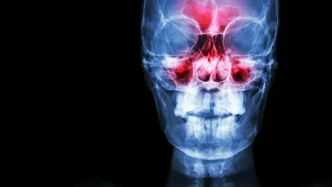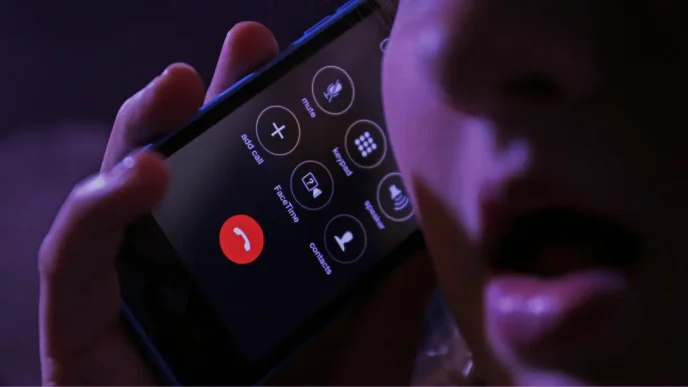In a remarkable display of medical precision, Thanh Hóa Provincial General Hospital in central Vietnam has successfully performed emergency surgery on a 27-year-old man who suffered a rare and life-threatening work-related injury. The patient, a resident of Vĩnh Lộc Commune in Thanh Hóa Province, arrived at the hospital in critical condition with a metal drill bit lodged deep in his nasal cavity—an accident that could have cost him his vision or even his life.
A Harrowing Accident
The incident occurred while the young man was operating a rock drilling machine. According to family members, a drill bit suddenly dislodged and struck him in the nose with tremendous force, causing him to panic and resulting in severe pain, and heavy bleeding. In a desperate attempt to remove the object himself, he inadvertently worsened the bleeding, unable to dislodge the metal piece. After receiving initial care at a local health facility, he was urgently transferred to Thanh Hóa Provincial General Hospital for specialized treatment.
Upon arrival, medical imaging revealed the shocking extent of the injury. CT scans and 3D imaging showed a 7–8 cm long metal drill bit, curved like a fishhook, embedded in the patient’s nasal cavity. The object had entered through the right nostril, pierced the nasal septum entirely, and lodged its hooked tip deep into the left nostril. The lower nasal turbinate was severely torn, and the nasal septum sustained a significant perforation. Given the complexity and potential dangers of the injury, the medical team scheduled an emergency overnight surgery.
A Delicate Operation
The surgery presented extraordinary challenges due to the unusual shape and position of the foreign object. Dr. Nguyễn Văn Hòa, Head of the Head and Neck Unit in the Ear, Nose, and Throat (ENT) Department at Thanh Hóa Provincial General Hospital, led the surgical team. He described the case as highly unusual, noting the drill bit’s fishhook-like curvature posed a significant risk. “If the operation had not been handled precisely, the foreign object could have caused further tearing, damaged nearby structures, and led to profuse bleeding that would be extremely difficult to control” Dr. Hòa explained on August 7, 2025.
Fortunately, the drill bit had not shifted upward. A deviation of just a few millimeters could have resulted in catastrophic damage to the eyeball or critical structures at the base of the skull, potentially leading to permanent disability or death. Using a modern endoscopic system, the surgical team proceeded with meticulous care. After 40 minutes of intense focus, they successfully extracted the drill bit. The wound was thoroughly cleaned, bleeding was controlled, and the torn mucosa—particularly at the lower turbinate—was carefully sutured. Specialized biological hemostatic materials were applied within the nasal cavity to aid healing and prevent complications.
Road to Recovery
Following the surgery, the patient was placed under intensive care for over a week. His condition stabilized remarkably, with vital signs returning to normal. By the time of his discharge, he had met all medical criteria to return home, marking a significant triumph for both the patient and the hospital staff. The case highlights the critical importance of rapid response and advanced medical technology in addressing rare and severe injuries, particularly in regions where access to specialized care can be limited.
Workplace Safety Concerns
While the patient’s recovery is a cause for celebration, the incident raises important questions about workplace safety in Vietnam, especially in industries involving heavy machinery. Work-related accidents, though not always as dramatic as this case, remain a concern across the country. Many rural workers, like the patient from Vĩnh Lộc Commune, operate equipment under challenging conditions, often with limited safety training or protective gear. The force with which the drill bit struck the patient underscores the potential hazards of such tools and the need for stricter safety protocols.
Though specific data on workplace injuries in Thanh Hóa Province is not widely available, broader national statistics suggest that industrial accidents remain a pressing issue. The Vietnamese government has made efforts to improve occupational safety through regulations and public awareness campaigns, but enforcement can be inconsistent, particularly in remote areas. This incident serves as a stark reminder of the risks faced by workers and the importance of accessible emergency medical services when accidents do occur.
A Community’s Relief
For the patient’s family and the small community of Vĩnh Lộc Commune, the successful surgery is nothing short of a miracle. The young man’s survival and recovery stand as a testament to the skill and dedication of the medical team at Thanh Hóa Provincial General Hospital. As he returns home, his story serves as both a cautionary tale about workplace hazards and a beacon of hope for others facing unexpected medical emergencies in Vietnam’s heartland.
















